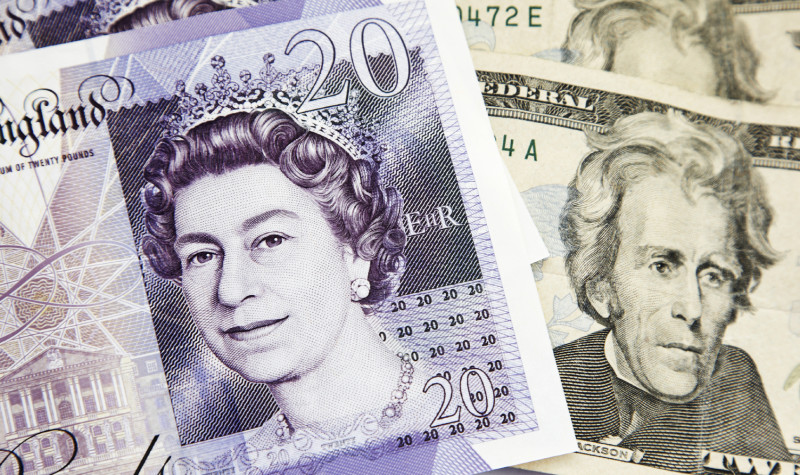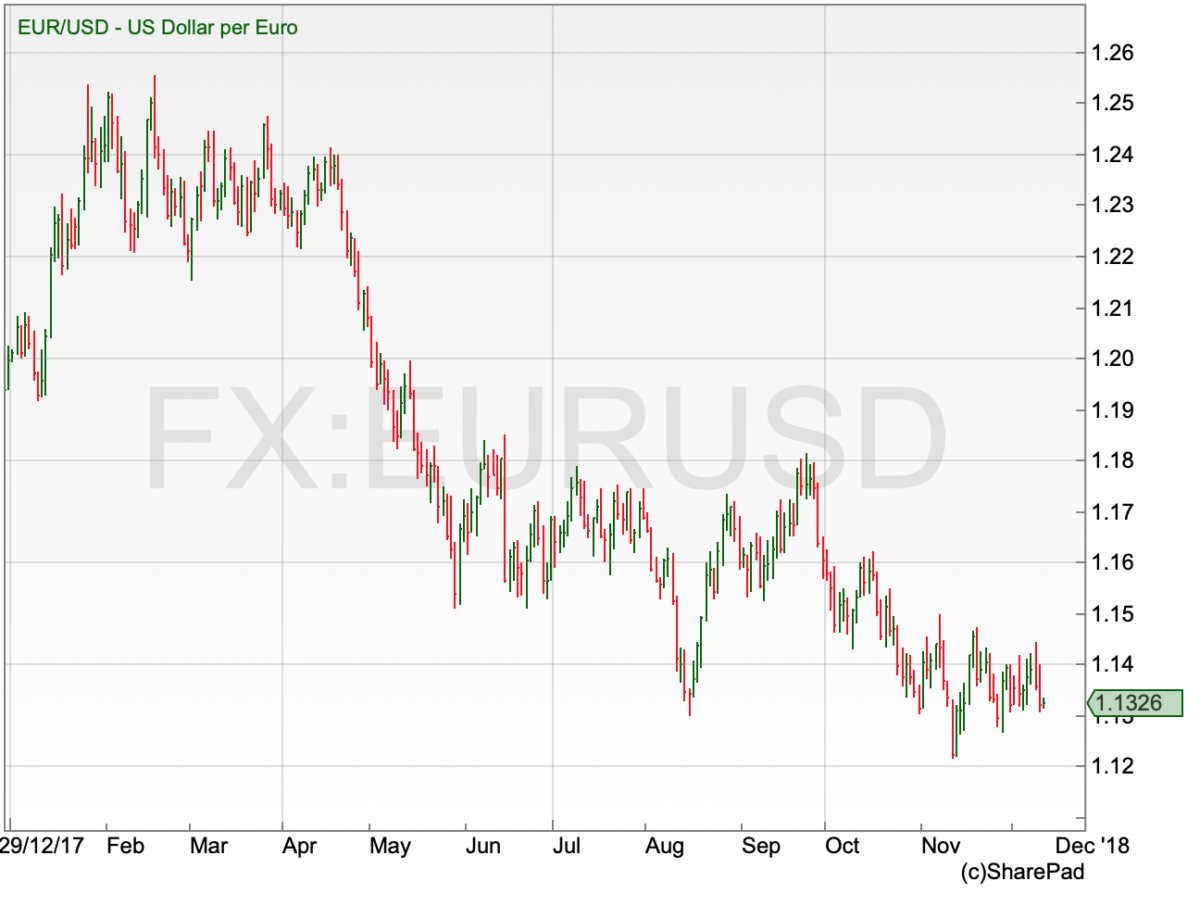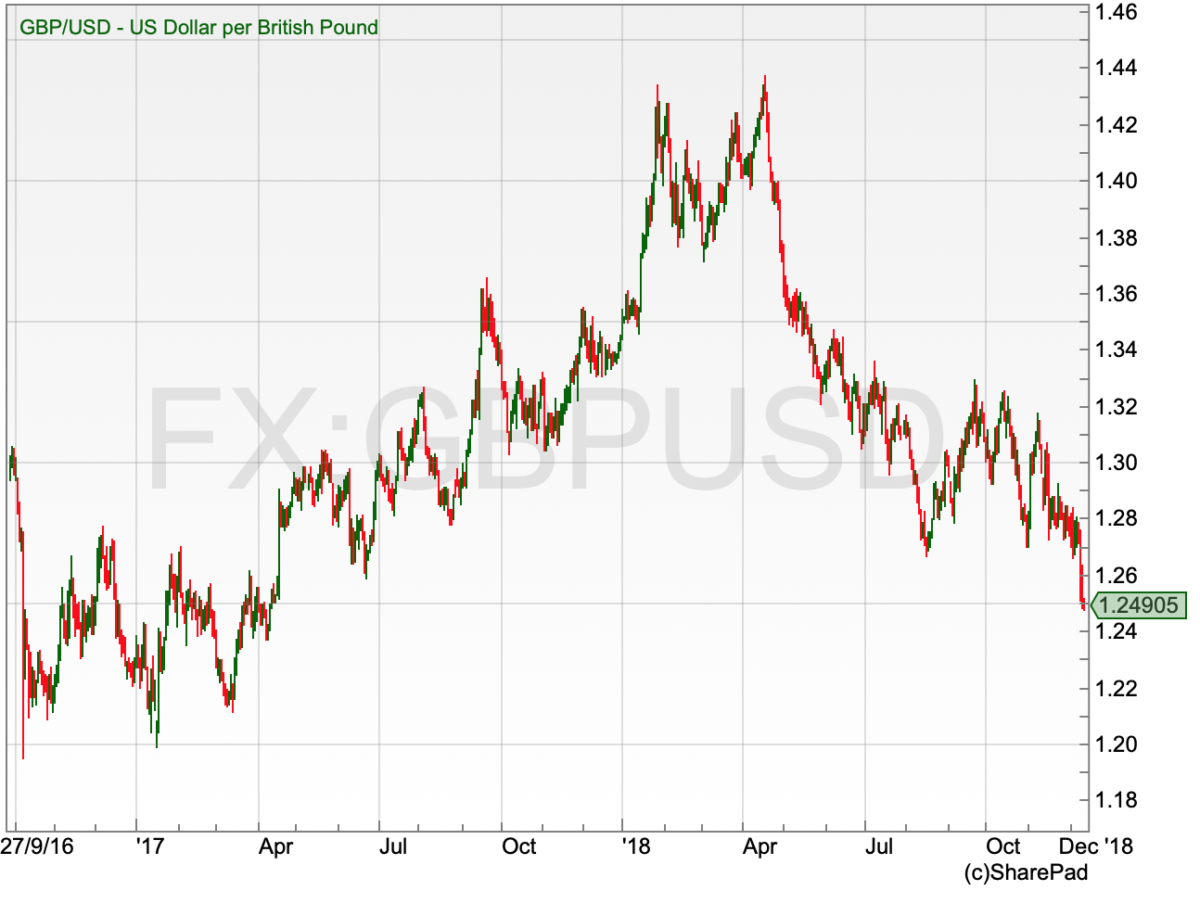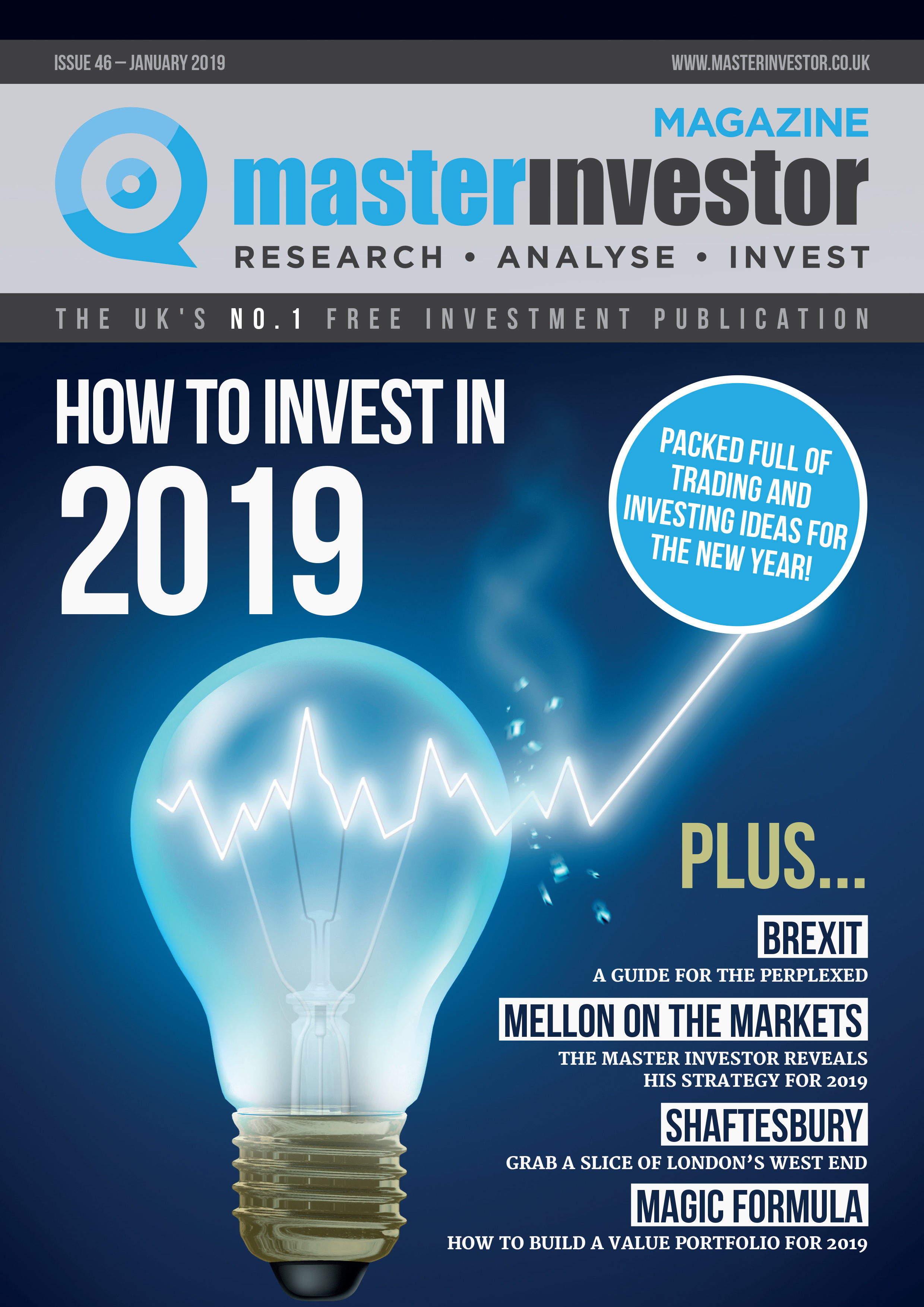These 3 currencies could sparkle in 2019

There is seldom a dull moment in the foreign exchange markets. Currencies are a barometer of the health of a country’s economy, so if there is an economic crisis, it will usually be reflected in the FX market. 2018 saw its fair share of drama, with the Turkish lira a key focus during the summer as it lost 30% of its value against the US dollar, on concerns of an economic crisis and sanctions from the USA.
| This article was originally featured in Master Investor Magazine
Never miss an issue of Master Investor Magazine – sign-up now for free! |
Sticking with the major currency pairs, traders still had plenty with which to occupy themselves. One of the major themes for the year was – yes, you guessed it – Brexit. In April, the pound hit its best level against the US dollar since the EU Referendum, trading at up to 1.43. And then, in December, following a resurgence of the US currency and frustration from the lack of Brexit progress, it hit a 20-month low of 1.25. You don’t need a crystal ball to forecast that the pound’s volatility looks set to continue into the new year.
As it is the start of 2019, I thought it would be interesting to look at three different markets which may appeal to both investors and traders in the year ahead, depending on their attitude to risk.
One for the conservative: US dollar continues as a safe haven
Although Brexit woes weighed on the pound in the second half of 2018, it was dealt something of a double whammy as the US dollar made an impressive comeback. 2017 had been the worst year for the American currency for 14 years – and many analysts had expected this to continue. That was the case for the first few months, but from April it started to move higher against a basket of currencies, gaining 10% by December.
It has become something of a safe haven in times of trouble – and the second half of 2018 saw plenty of volatility for stock markets, which may have persuaded investors to stash their cash somewhere else, further boosting the dollar. Ongoing political and market uncertainty should ensure the dollar remains attractive in the short term– the only worry here is that it has already performed well for quite some time. Probably the easiest way to track the dollar is watching the most traded foreign exchange pair, the euro/US dollar rate. As can be seen from the chart below, the euro finished 2018 near its lows for the year.
EUR/USD 2018

One for the brave: pound surges as politicians unite resolve Brexit
Writing this as the pound hits fresh 20-month lows is maybe the very definition of financial markets optimism. Since April 2018, the pound has lost 12% of its value against the dollar, declining from 1.43 to below 1.25. The lack of progress on Brexit, the cancelling of the planned December vote on Theresa May’s proposed deal, the Conservative leadership challenge – pick your favourite reason; they have all had an impact.
Given the many contributing factors, it is difficult to see the light at the end of the tunnel for the pound – and this is despite the fact that the UK economy is, on the face of it at least, doing okay.
Maybe, just maybe, the pessimism has gone too far. If you agree with that, then perhaps stability returns to the pound in 2019 and it, once again, starts a recovery. Even if that does start to happen, it is still not a trade for the faint-hearted. Volatility is very much the order of the day for GBP/USD, and with the UK still expected to leave the EU at the end of March, there should be plenty of shocks in the first three months of the year at the very least. But despite the current political shambles, GBP/USD ended 2018 around 5% above the 2017 lows of 1.20, and the brave may think enough gloom has been priced into the UK’s currency for now.
GBP/USD 2016 – 2018

One for the rest – speculative, with a sprinkling of safety?
I last wrote about gold in the November issue of Master Investor and it has moved slightly higher since then – but there could well be more to come in 2019. It has not been the best of years for long-term holders of the yellow metal. It peaked around $1,360 in April, but then slid to $1,160 by August. This was another market that became a victim of the dollar’s resurgence – as the US dollar rises, traditionally the price of gold slides.
| This article was originally featured in Master Investor Magazine
Never miss an issue of Master Investor Magazine – sign-up now for free! |
But the last few months of the year saw some change and the gold market started to recover, and the stock market volatility may have played a part here. Although gold has perhaps lost some of its safe-haven appeal to the US dollar, it is still a destination for investors in times of trouble.After almost ten years of rising stock markets, the wobbles in 2018 may have encouraged some to take some risk off the table to see what happens next – and that will have benefited the price of gold.
Then there is the inflation angle. The cost of living is on the up after a period of near-zero inflation. The threat of trade wars and tariffs continue to hang over the global economy, and that could push up the costs of imported goods of the world’s major economies, which would have a knock-on effect on inflation. It’s early days in the rising inflation cycle, but it’s another factor that could play into the hands of the gold bulls, and see the yellow metal once more regain its popularity with a wider investor base.
GOLD US$ 2018

2019 has a lot to live up to if it is going to match the volatility and drama of the previous year! Either way, it will be another fascinating 12 months for all sorts of asset classes – and those dramas will be played out on the world’s foreign exchange markets.

Comments (0)